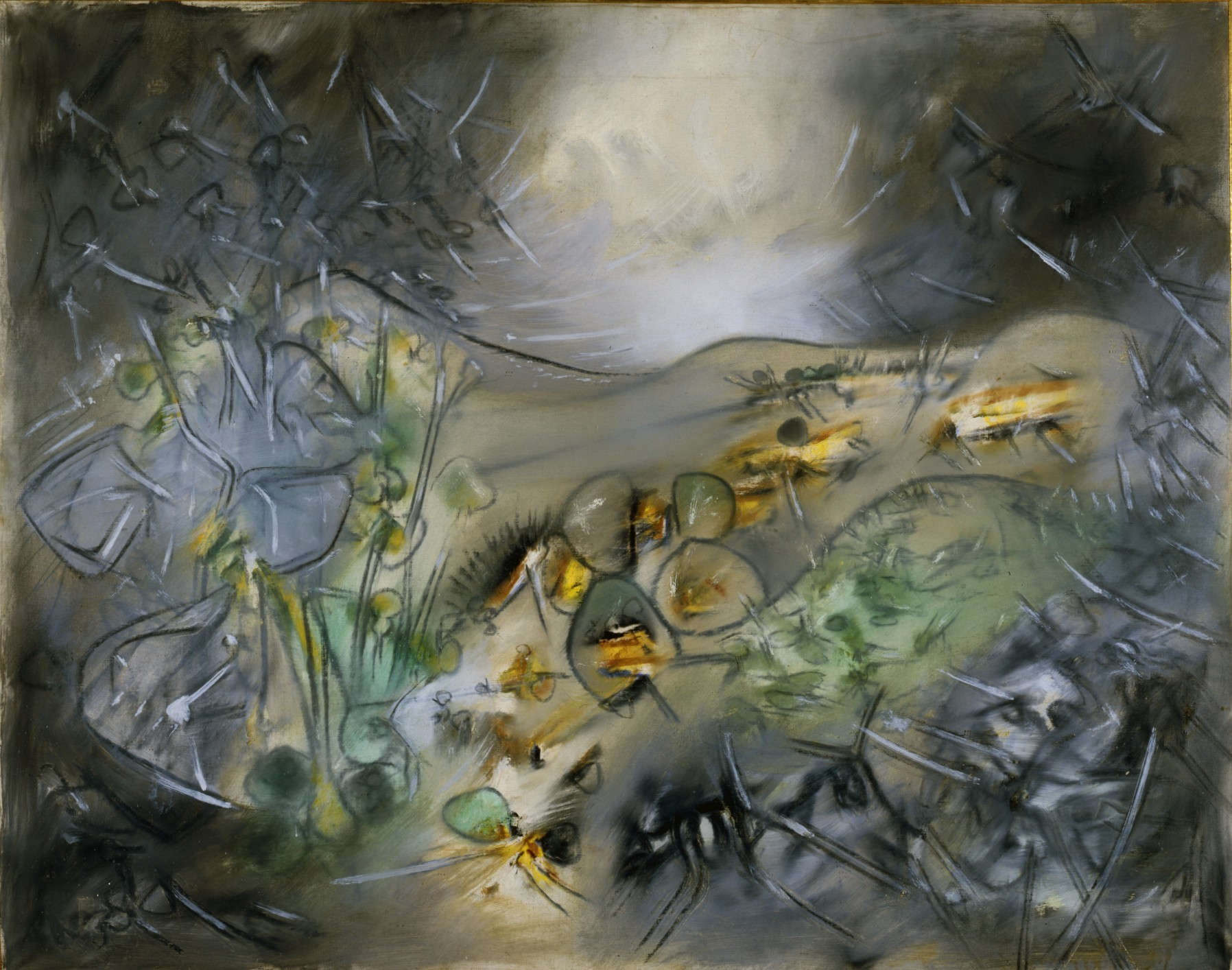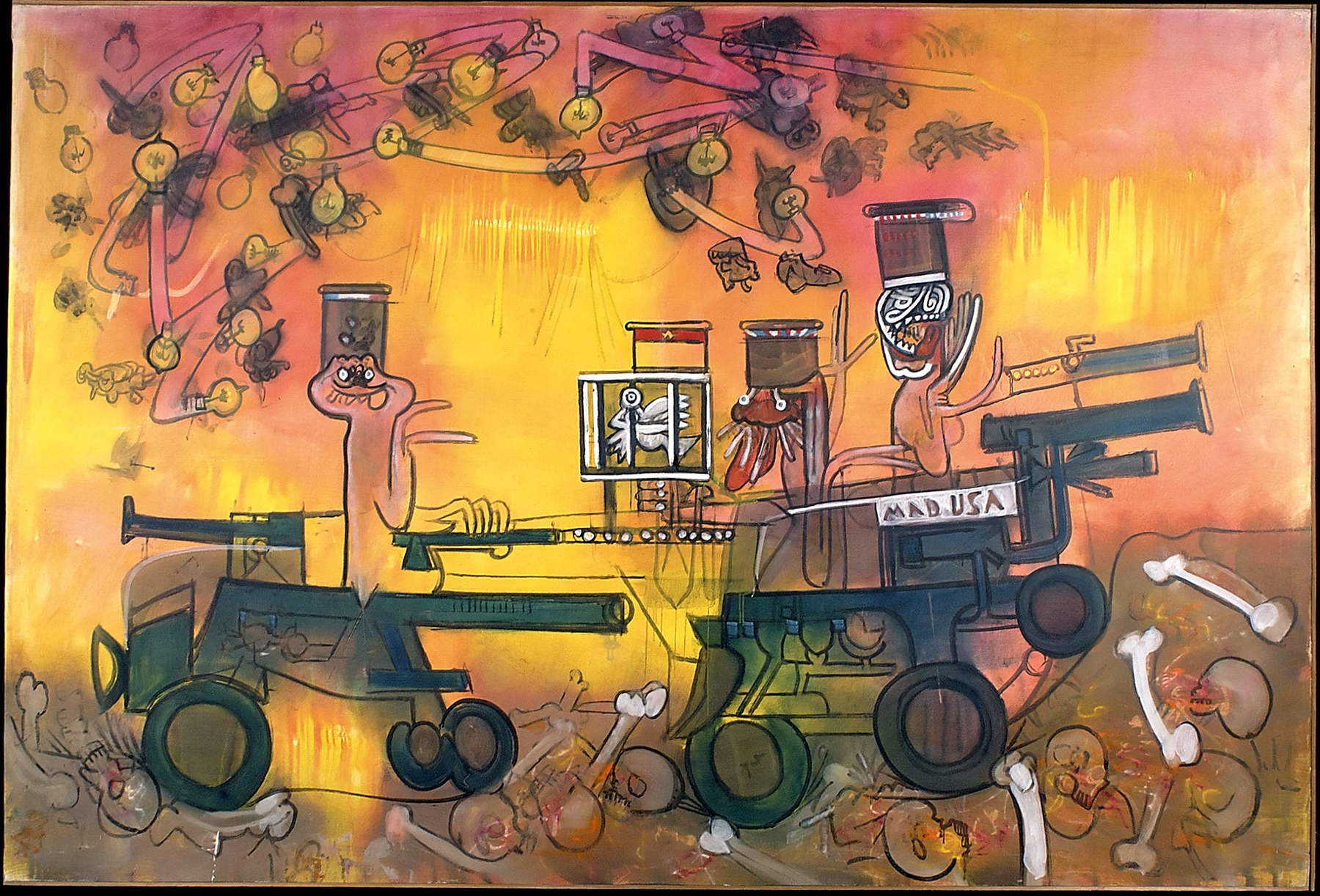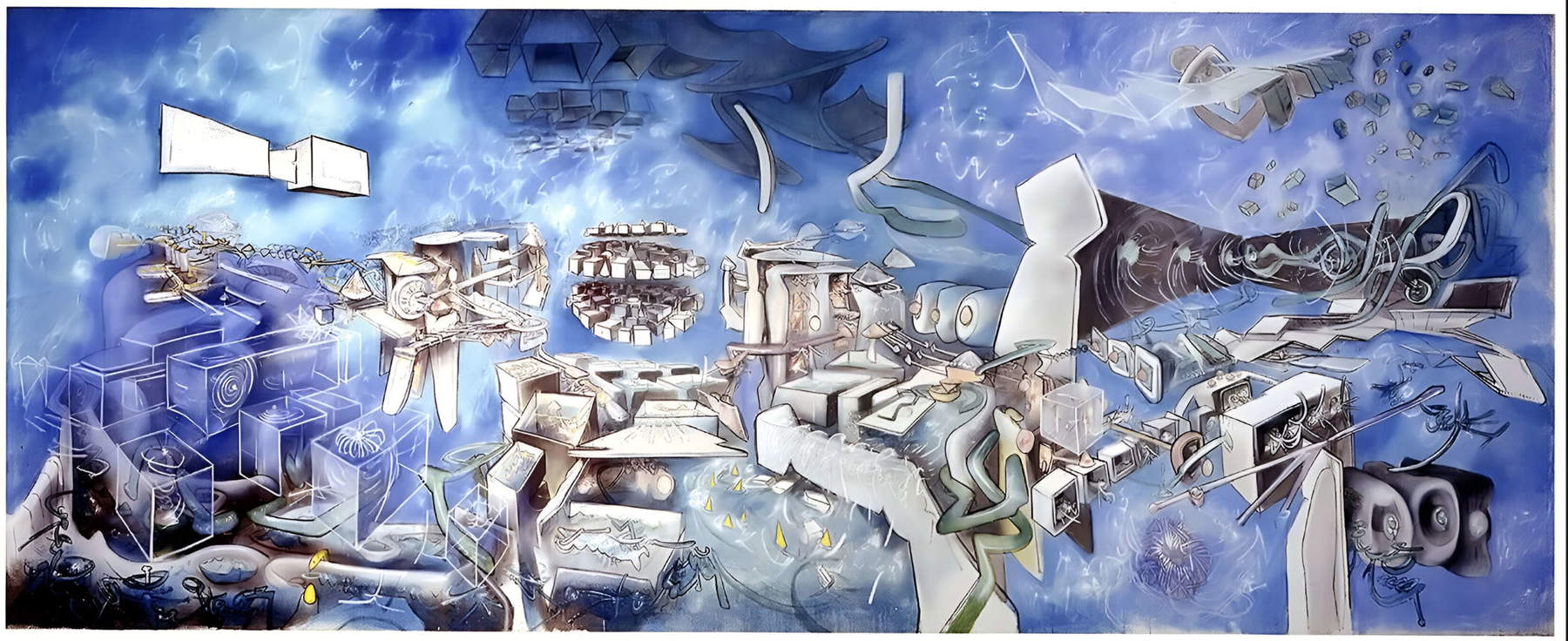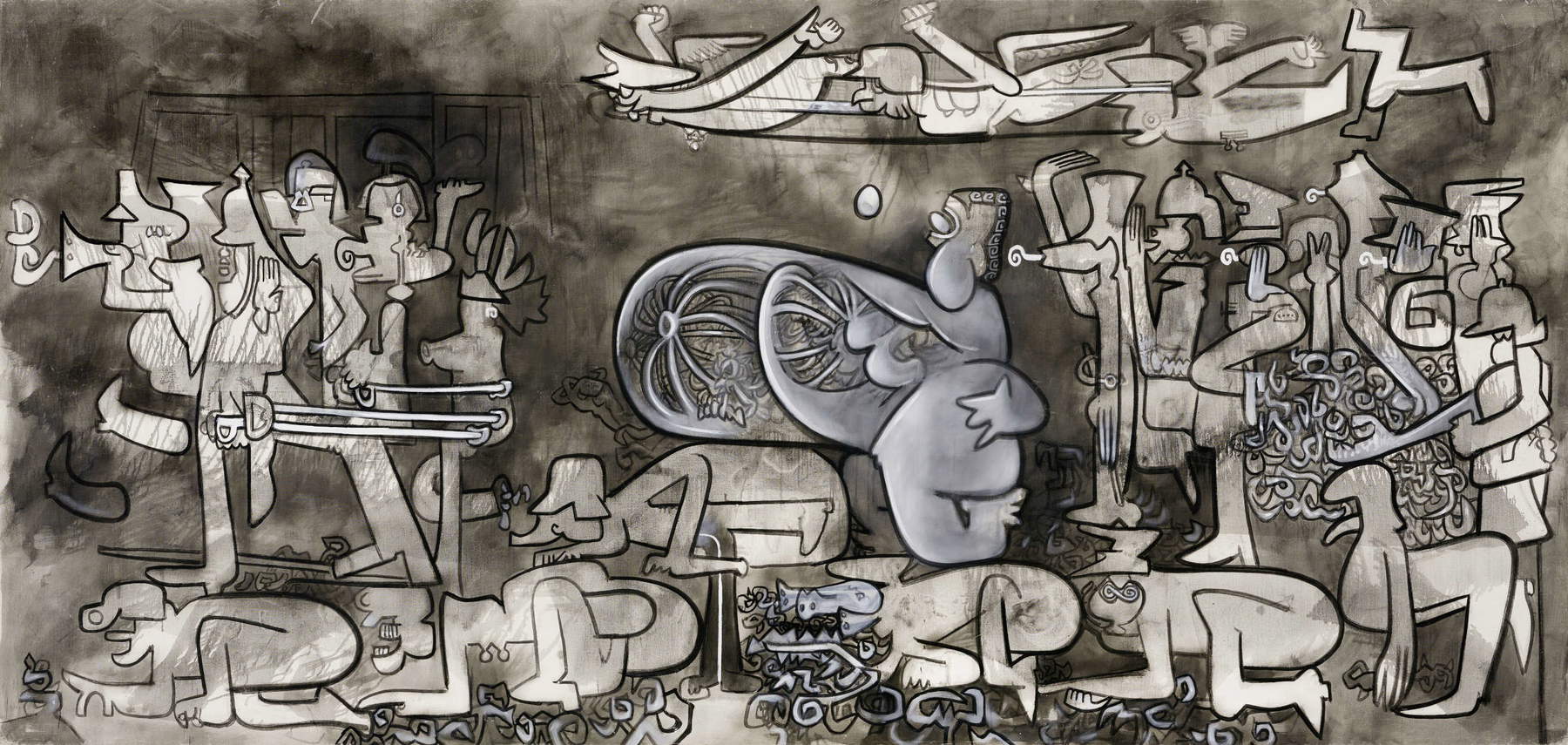The exhibition Roberto Matta 1911-2002 at Ca’ Pesaro - Galleria Internazionale d’Arte Moderna di Venezia curated by Norman Rosenthal, Dawn Ades and Elisabetta Barisoni, represents the first institutional exhibition in Italy dedicated to Chilean artist Roberto Matta (Santiago del Cile, 1911 - Civitavecchia, 2002). The exhibition can be visited from October 25, 2024 to March 23, 2025. It aims to restore the complexity of his personality and reflections, which span scientific, cultural and philosophical knowledge. Matta left a profound mark as a painter, draftsman, architect, sculptor and militant.
The exhibition is part of the project of in-depth study and rediscovery of 20th-century artists, which the International Gallery of Modern Art in Venice carries out starting with works from its collection, among which Alba sulla terra of 1952 stands out. In addition to this, the initiative aims to renew the artist’s historical connection with Venice. Matta first came to the lagoon city in 1948, participating in the Peggy Guggenheim collection exhibited in the Greek Pavilion. In 1953, the Museo Correr hosted his exhibition Matta 1949-1953, organized by the Galleria del Cavallino and under the direction of Carlo Cardazzo. On that occasion, Dawn on Earth became part of an Italian public collection for the first time, acquired by the City of Venice for Ca’ Pesaro. A protagonist of Surrealism, a movement whose centenary will be celebrated in 2024, Matta developed a unique and complex visual language. His art mixes elements such as irrationality, the unconscious, psychic automatism and changing matter, typical of the surreal, with the Parisian influences of his collaboration with Le Corbusier. Architectural and perspective elements also emerge in his mature production, revealing his passion for poetry and his connection with Breton and the Surrealist group.




One can sense in his work the influence he exerted on the American Abstract Expressionists of the 1940s, but also his involvement in the world of science fiction. He was a precursor of an aesthetic where videogame atmospheres and suggestions typical of street art coexist. The exhibition opens with Coïgitum from 1972, a monumental work more than 10 meters long that testifies to the artist’s continuous exploration of space. Matta combines surrealist imagery with architectural construction and challenges Euclidean spatial conventions, anticipating many of the modern aesthetics that mix art and technology.
The exhibition itinerary is developed according to a chronological order, which does not rigidly impose itself, but allows Matta’s different souls to emerge. Among the works on display are monumental paintings and sculptures: a forest of animal totems, mythological figures and archetypes with Mediterranean and pre-Columbian resonances. The works are featured in the museum spaces, accompanied by design objects such as the Malitte modular seating system, now produced by Paradisoterrestre and available to visitors. There are also works in glass, the result of the Venetian experience at Fucina degli Angeli. Finally, another key aspect of Matta’s work is political engagement. After the postwar period, his art merges with politics, recalling figures such as Federico García Lorca, a victim of the Franco regime. Among the most significant works exhibited at Ca’ Pesaro are 1958’s La Question, which addresses the theme of the Algerian War; La Chasse aux adolescents, evocative of the French May Revolution of 1968; and 1975’s El Burundu Burunda ha muerto, inspired by the Colombian civil war of the 1950s. No less important is Matta’s sensitivity to ecological issues, expressed both in his subjects and in the way he sets them up. The exhibition at Ca’ Pesaro, curated together with the Design Differente group, reflects his vision, with the use of recycled materials and an approach that today we would call sustainable.
 |
| Visionary and multifaceted: the art of Roberto Matta on display at Ca' Pesaro in Venice |
Warning: the translation into English of the original Italian article was created using automatic tools. We undertake to review all articles, but we do not guarantee the total absence of inaccuracies in the translation due to the program. You can find the original by clicking on the ITA button. If you find any mistake,please contact us.